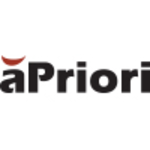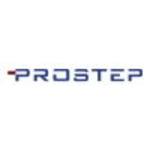Description

aPriori

OpenPDM
Comprehensive Overview: aPriori vs OpenPDM
As of my last update, aPriori and OpenPDM serve distinct purposes in the realm of product lifecycle management and cost estimation, with a focus on different aspects of product development and manufacturing.
a) Primary Functions and Target Markets
aPriori
- Primary Functions:
- aPriori is primarily a cost management software platform designed to provide real-time insights into manufacturing costs. It helps companies by generating cost estimates quickly and accurately during the product design phase. It uses digital manufacturing simulations to evaluate the cost of parts and assemblies, factoring in materials, labor, tooling, processes, and geographic location.
- Target Markets:
- aPriori’s typical customers are in industries such as automotive, aerospace, industrial machinery, and consumer goods. It targets large manufacturers looking to cut costs and optimize their product designs and processes.
OpenPDM
- Primary Functions:
- OpenPDM is a comprehensive integration platform designed for Product Data Management (PDM) and Product Lifecycle Management (PLM) systems. It facilitates the seamless exchange of data between different PLM systems, or between PLM systems and ERP systems, ensuring smooth interoperability and data consistency.
- Target Markets:
- It is aimed at industries where complex product lifecycle management is crucial, such as automotive, aerospace, and industrial manufacturing. Organizations that operate multiple PLM systems or require integration into broader enterprise IT landscapes are typical users.
b) Market Share and User Base
Determining precise market share and user base for niche software solutions like aPriori and OpenPDM typically involves looking at industry analyses, customer reviews, and software adoption rates:
-
aPriori: As a cost management tool for manufacturing, aPriori is considered a leader in its niche. It has a solid presence in industries that are highly sensitive to manufacturing costs and require detailed cost analysis to remain competitive.
-
OpenPDM: As a middleware solution for PLM integration, OpenPDM has a strong standing among companies needing integration and data consolidation between disparate systems. The user base includes multinational companies with complex PLM landscapes.
c) Key Differentiating Factors
-
Functionality:
- aPriori is focused on cost estimation and management, providing tools to estimate and reduce product costs during the design phase and throughout the product lifecycle.
- OpenPDM primarily facilitates data exchange and integration between various enterprise systems, ensuring smooth interoperability, data migration, and synchronization across multiple PLM solutions.
-
Use Case:
- aPriori is typically used by design and manufacturing teams to optimize the cost-efficiency of products before production.
- OpenPDM is used by IT and engineering teams to bridge gaps between different data systems and ensure consistent data handling across platforms.
-
Technology:
- aPriori uses patented cost models, real-time manufacturing simulations, and automatic evaluation systems to generate instant insights.
- OpenPDM is focused on middleware solutions and utilizes connectors and APIs to integrate different data environments, supporting a wide range of PLM platforms.
In conclusion, while both aPriori and OpenPDM operate in the product development and manufacturing ecosystems, they address different problems and cater to different needs within these sectors, offering unique solutions tailored to their targeted audiences. Their market positions reflect their specialization and the growing need for sophisticated solutions in cost management and data integration, respectively.
Contact Info

Year founded :
2007
Not Available
Not Available
Ukraine
Not Available

Year founded :
Not Available
+49 6151 92870
Not Available
Not Available
Not Available
Feature Similarity Breakdown: aPriori, OpenPDM
To provide a detailed feature similarity breakdown for aPriori and OpenPDM, we can analyze the commonalities, user interfaces, and unique features of these software solutions. Note that the following information is based on the typical features of these products up to the date of my last training data:
a) Core Features in Common
Both aPriori and OpenPDM provide solutions that focus on product lifecycle management and digital manufacturing processes. The core features they share include:
- Product Lifecycle Management (PLM): Both platforms offer tools to manage product data throughout the lifecycle, from design to manufacturing and beyond.
- Integration Capabilities: Both solutions support integration with various CAD, ERP, and other enterprise systems to streamline data workflows.
- Collaboration Tools: Each platform provides collaboration features to facilitate communication among different teams and stakeholders.
- Cost Management: Tools for tracking and managing costs related to product development are available in both solutions.
b) User Interface Comparison
-
aPriori:
- Typically designed with a focus on user-friendly interfaces that allow for easy navigation and understanding. The UI usually emphasizes real-time cost assessment and intuitive visualization of manufacturing processes.
- Interfaces often include dashboards, cost reports, and interactive cost models that provide insights into cost drivers and high-level metrics.
-
OpenPDM:
- Known for a more technical or modular interface that caters to IT and PLM professionals. The focus here is on managing data interoperability between different PLM systems and customizing workflows.
- Provides extensive configuration options and is often used in environments with complex PLM requirements where custom integrations are necessary.
c) Unique Features
-
Unique to aPriori:
- Real-Time Costing: aPriori stands out with its ability to provide real-time costing insights for manufacturing processes, helping companies quickly understand the financial impact of design and manufacturing decisions.
- Manufacturing Process Optimization: Offers advanced tools for optimizing manufacturing processes by simulating and analyzing different scenarios to reduce costs and improve efficiency.
-
Unique to OpenPDM:
- PLM Data Integration: OpenPDM is particularly strong in its data integration capabilities, allowing for seamless connections between multiple PLM, ERP, and other enterprise systems across an organization.
- Cross-Platform Data Management: Known for managing data across diverse platforms, making it a robust solution for companies dealing with multiple PLM ecosystems.
In summary, while both aPriori and OpenPDM offer powerful solutions for managing product data and processes, aPriori excels in real-time costing and manufacturing process analysis, whereas OpenPDM shines in its data integration and management capabilities across multiple platforms.
Features

Not Available

Not Available
Best Fit Use Cases: aPriori, OpenPDM
a) aPriori is a software platform primarily focused on product cost management and should-cost analysis. It is particularly beneficial for:
- Manufacturing Companies: Especially those in the automotive, aerospace, industrial equipment, and consumer electronics sectors, where controlling production costs is critical.
- Product Development Teams: Companies aiming to streamline their product design phase by integrating cost estimation early in the development process to avoid expensive design changes later.
- Engineers and Designers: Using aPriori, they can identify cost-saving opportunities by comparing different design alternatives or manufacturing processes.
- Companies Focused on Cost Optimization: Those looking to negotiate better supplier terms based on detailed cost analysis, leading to improved profit margins.
- Large Enterprises: Typically, those with complex product lines and substantial production volumes, which require sophisticated cost analysis tools.
b) OpenPDM, developed by PROSTEP, is designed for product data management and integration. It is preferred in scenarios such as:
- Organizations with Heterogeneous IT Environments: Companies needing to integrate data across various PLM (Product Lifecycle Management), ERP (Enterprise Resource Planning), and CAD systems will benefit from OpenPDM’s capabilities.
- Cross-Enterprise Collaboration: It is ideal for industries where collaboration extends across different companies and systems, such as in joint ventures or between OEMs and suppliers.
- Complex Product Development Operations: Industries like aerospace, automotive, and shipbuilding, where there is a need to synchronize product data across multiple platforms and ensure consistent data flow.
- Companies Emphasizing Digital Continuity: Those that need to harmonize their digital thread across design, manufacturing, and service departments to ensure efficient data management.
- Medium to Large Enterprises: Particularly those involved in complex engineering and manufacturing processes, dealing with extensive product data that requires integration and management.
d) Catering to Different Industries and Company Sizes:
-
aPriori: This solution serves a wide range of industry verticals by providing actionable insights into product costs, which are crucial for sectors like automotive, aerospace, and industrial manufacturing. aPriori’s scalability makes it suited for both mid-sized companies looking to enhance specific segments of their cost management and large enterprises needing comprehensive cost control across vast product lines.
-
OpenPDM: This product is versatile in its capability to serve industries requiring thorough data management and integration processes. It supports industries such as automotive, aerospace, and heavy machinery, where complex product data needs harmonized management across various platforms. OpenPDM is particularly effective for medium to large enterprises due to the complexity and scale of the integration processes it supports.
Both solutions address the distinct needs of industries where product development and data management intricately impact success—each offering a specialized focus on either cost optimization or data integration and management, respectively.
Pricing

Pricing Not Available

Pricing Not Available
Metrics History
Metrics History
Comparing undefined across companies
Conclusion & Final Verdict: aPriori vs OpenPDM
To provide a conclusion and final verdict on aPriori and OpenPDM, we need to assess both products in terms of their features, functionalities, user experience, and overall value proposition.
a) Best Overall Value
aPriori: aPriori is known for its strong cost management capabilities, especially in manufacturing environments. It emphasizes cost estimation, product cost management, and digital manufacturing simulations. It is particularly well-suited for industries such as automotive, aerospace, and industrial machinery, where understanding and controlling production costs is a major concern.
OpenPDM: OpenPDM shines in its ability to integrate different PLM (Product Lifecycle Management) systems, offering robust data exchange and interoperability solutions. It's advantageous for companies operating in multi-PLM environments or those looking to transition between systems efficiently.
Overall Value Verdict:
- If your organization's primary objective is cost management and manufacturing efficiency, aPriori offers the best value.
- If integration, data interoperability, and leveraging existing PLM investments are your main concerns, OpenPDM provides significant value.
b) Pros and Cons
aPriori:
- Pros:
- Exceptional for product cost management and optimization.
- Provides comprehensive digital manufacturing simulation.
- Helpful cost visibility early in the product design phase.
- Cons:
- May require significant initial setup and customization.
- Primarily focused on manufacturing industries, possibly limiting versatility in other sectors.
OpenPDM:
- Pros:
- Strong in data exchange and PLM integration capabilities.
- Reduces complexity in managing multiple PLM systems.
- Helps in seamless data transition and supports digital continuity.
- Cons:
- Might have a steep learning curve for users unfamiliar with PLM systems.
- Less focused on cost management compared to aPriori.
c) Recommendations
For Users Choosing Between aPriori and OpenPDM:
-
Assess Your Needs:
- If cost estimation and reduction in manufacturing are your priorities, lean towards aPriori.
- If you're dealing with data management across different PLMs or need robust integration solutions, consider OpenPDM.
-
Consider Industry Specifics:
- Evaluate whether your industry aligns more with manufacturing complexities or with the need for comprehensive data integration solutions.
-
Long-term Goals and Scalability:
- Determine which product aligns with your company’s strategic goals—whether it’s cost reduction or enhancing system interoperability.
-
Pilot and Evaluate:
- Conduct pilots to assess usability, compatibility with existing systems, and measure potential improvements.
Ultimately, the best choice depends on the specific organizational goals and operational priorities. Selecting a product that aligns well with your organizational needs and offers scalability will ensure better ROI in the long run.
Add to compare
Add similar companies



